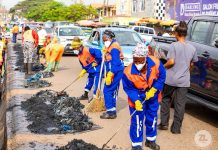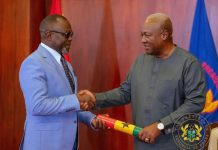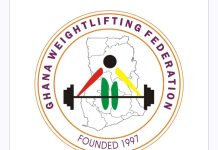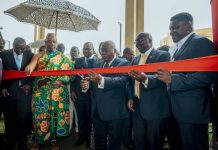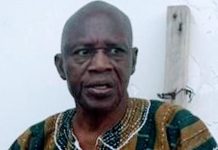CAPE TOWN, South Africa, May 2022/ — Since January, I have been approached by investors and projects owners alike who are looking to get projects funded or deals flowing. At the same time, I have been trying to estimate using available data the gap between infrastructure and energy funding. The figure we have been using is $250 billion a year between now and 2025.
Given that the African population is set to double between now and 2050, we can expect that figure to be in the trillions unless the continent finds a way to successfully develop and fund energy projects to universally guarantee electricity access and infrastructure expansion.
Over the past few months, I have made a couple of observations of which the most prominent is that not all deals are made equal. Many investors want renewable projects but only deals above a certain size – $2 million is too small, for example, for many larger investors though this project size timeline is much shorter and can bring immediate impact.
A project upwards of $2 billion is more attractive in terms of funding returns but the timeline to project completion could be up to a decade. Overall, there is a hesitancy to engage in hydrocarbon projects even though there are about a dozen markets actively touting their blocks, which, in oil and gas hotspots, could be easily tied into existing infrastructure.
Given the enormous funding gap, I truly believe there is an opportunity to revolutionize how projects are funded. My thesis is that more African energy projects should be crowdfunded either in fiat or digital currency and non-fungible tokens (NFTs) to ensure that these projects get developed, especially the smaller ones.
This could work in two ways. Firstly, through crowdfunding debt. A project needs to raise debt for the project to start. All agreements and feasibility studies have been completed and the project has a 30-year term agreed with the government. Investors can loan the project money with a fixed percentage of return over a two to three-year period. The project gets funded, and investors get a great return on their money. Some projects could deliver up to 30% return if successful.
Secondly, through crowdfunding equity. A project needs to raise a percentage equity funding to attract larger institutions who will structure and loan the rest.
The owners of the project have already invested all their working capital into completing pre-feasibility studies and there is little scope of sovereign guarantees due to historical mismanagement of funds.
Investors can crowdfund to own an equity stake in the project and make the project more attractive to institutions. Equity owners later receive annual dividends over the lifespan of the project. With off-take agreements in place from the beginning of the project, this could make the deal even sweeter.
Neither of the above is revolutionary as both strategies are often employed in the start-up scene. However, given the investment gap and how few Africans have a stake in their own energy futures, this could prove an interesting theory.
Then, in my opinion, I started to get a bit creative. I’ve been paying a little attention to crypto, blockchain, web3 and NFTs. I am not an expert by any means and the NFT pump mostly disinterested me until I started to hear about real-world utility. NFTs can be used to prove authenticity and ownership, and this has instant utility in the world of event ticket reselling and luxury fashion.
A few weeks ago, I read a few articles about the tokenization of real estate in Miami whereby investors could “mint” a real-estate token giving them part ownership of the building. There must be an analogue linking of the deed to the token but after that point, the token is on the blockchain and can be transferred to future owners. In this respect, the barrier to entry is much lower. Instead of finding a 10% deposit for an apartment, real-estate NFTs could be minted for as little as the creator sets it at.
Could this be applied to African energy projects? I think so!
Let’s look at the above scenarios with a web3 lens such as energy asset NFT – debt. In this regard, the project raises capital via a cryptocurrency. Ethereum based technology makes sense, especially Polygon or Solana. Investors mint an energy debt NFT in order to raise capital for the project.
NFT holders are rewarded through holding the NFT throughout the debt term by earning additional cryptocurrency interest known as distribution. The NFT can be sold at any point to a new owner on the blockchain and the sale can also trigger smart contracts ensuring a royalty to the project owner or the wider community where the project is taking place.
Secondly, let’s look at energy asset NFT – equity. This is where things could get interesting. If you tokenize a whole asset – such as a solar farm, oil block, or biogas plant – it means that anyone (with access to a smartphone, WiFi and a cryptocurrency) can own part of a real-life asset. What I like about this idea is the democratization of the energy asset ownership.
It is not just energy companies, finance institutions, governments that get to get to own our infrastructure but anyone including everyday Africans and those in the diaspora. While NFTs cannot pay a dividend as they only prove ownership, the value of the NFT will naturally rise over time as a project comes online and starts to cashflow.
Owning 1,000 tokens of an oil block pre-production will become far more valuable when the asset is producing, especially at $100 per barrel. Token owners can be rewarded in cryptocurrency or fiat when distributions are paid out.
I think the key thing here is transparency in ownership and transparency which sets the continent up for long-term success. If token holders are also constituents in the project vicinity, it brings an additional layer or accountability and governance. An NFT could contain voting rights, and future sales generate royalties that are directed back into the local community.
If you’ve enjoyed this article and you want to connect with the author you can contact her here (kelly@energycapitalpower.com). Kelly-Ann is especially keen to talk to those who could help build the above and make it a reality.
Events organizer Energy Capital & Power (ECP) is committed to promoting investment into Africa’s energy, infrastructure, and mining events. Since 2016, ECP has been committed to bringing together energy stakeholders to connect, network and invest on the continent.
This year, ECP is honored to host a three-event calendar on the continent, starting with MSGBC Oil, Gas & Power (https://bit.ly/3kCixC9) 2022 in Dakar (September 1-2), followed by South Sudan Oil & Power (https://bit.ly/3vZo1fx) in Juba (September 13-14) and Angola Oil & Gas (https://bit.ly/3y8fKc3) in Luanda (November 29-December 1). The Cape Town based company organized a series of small-scale in-person events in 2021 in Angola, Libya, Senegal, South Sudan and the U.S., despite the backdrop of the COVID-19 pandemic.



